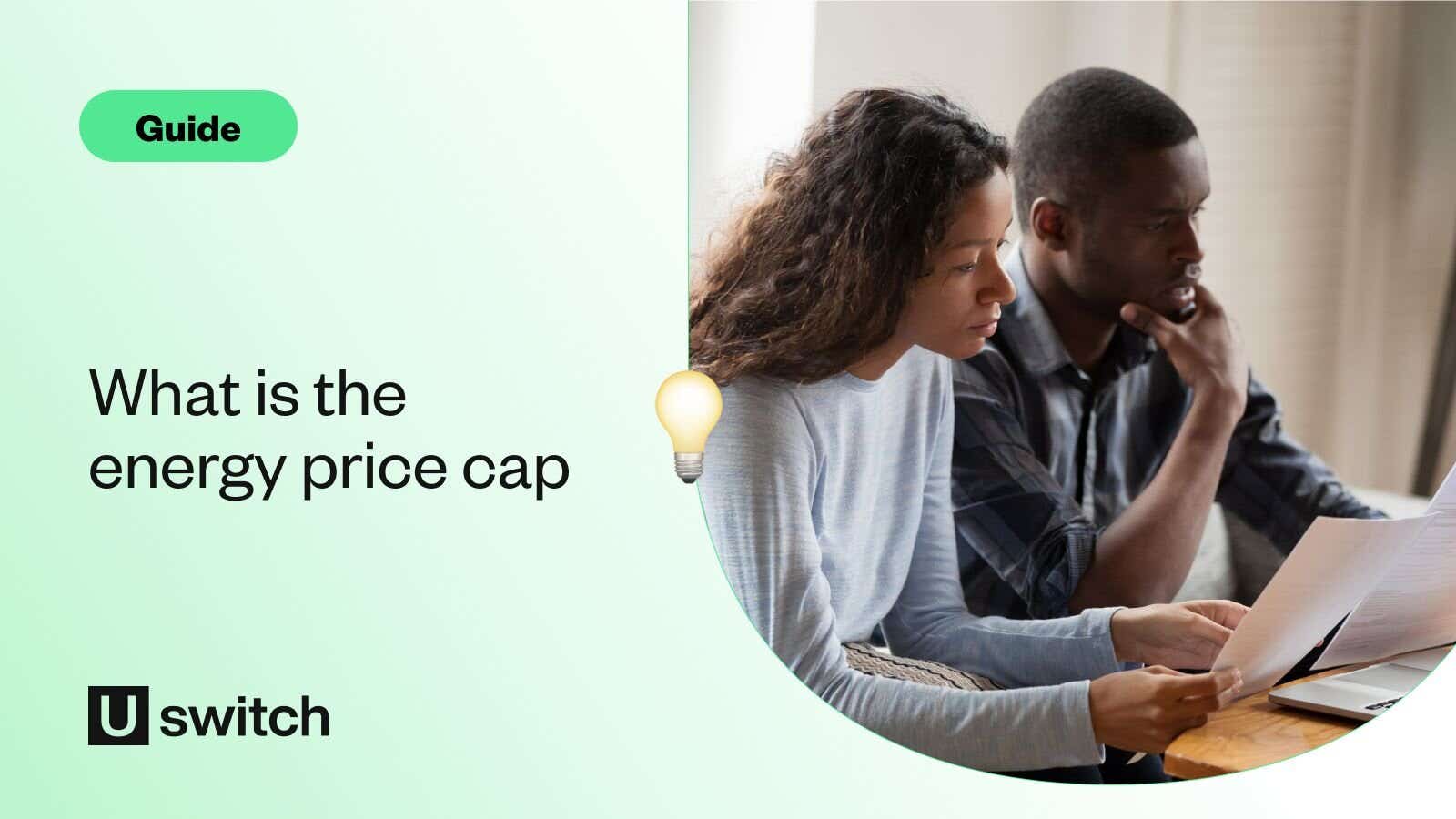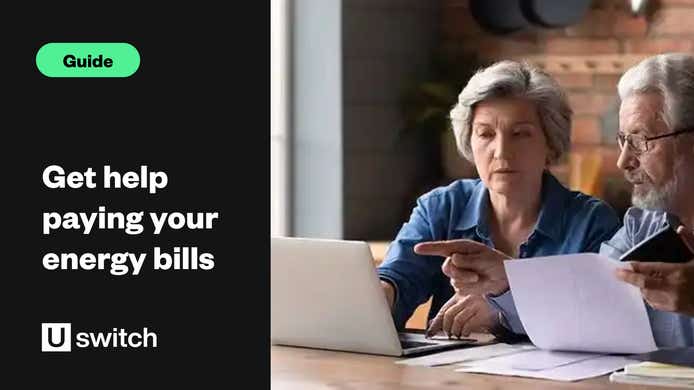Key takeaways
- The price cap limits the amount energy suppliers can charge customers on standard variable tariffs for each unit of energy.
- It's reported as an overall annual usage figure for an average household - currently £1,738.
- It is not a cap on a total bill - customers who use more than £1,738 worth of energy will pay more while those who use less will pay less.
- Customers can fix their deals so they are not affected by price cap increases.
What is the energy price cap?
The energy price cap is a limit on the unit rates and standing charges that energy suppliers can charge for their standard variable tariffs. The rate is set by Ofgem, the energy regulator, and is reviewed four times a year.
What is the energy price cap currently set at?
The price cap is currently set at £1,738 for average use dual fuel customers on standard variable tariffs until 31 March 2025.
This increase reflects wholesale energy price instability driven by global events.
If you're on a standard variable tariff, this is a good time to assess your options and compare energy deals to check whether there are any good options for you.
How will the 2025 energy price cap affect my bills?
The cap only applies to the unit rates of standard variable tariffs. These tariffs are typically the most expensive that suppliers offer. If you haven't switched energy before, or you've rolled off a fixed energy deal, you're likely to be on one of these tariffs.
It's important to remember that the cap is based on unit rates - that's the actual price that is changing - but in order to more clearly and easily report it, the "cap level" (currently 1,738) is based on an average use dual fuel customer paying by direct debit. This means that you could actually pay more than the cap amount if you live in a bigger house and/or use more energy.
What are the unit rates and standing charges for the energy price cap?
The average unit rates and standing charges for the January price cap are:
| Electricity | Gas | |
|---|---|---|
| Unit rates | 24.86p per kWh | 6.34p per kWh |
| Standing charge | 60.97p per day | 31.65p per day |
Will the next energy price cap level be higher or lower?
It's difficult to say where energy prices will go because the wholesale market is still so unpredictable. However, EDF regularly examines the latest developments and releases predictions for future price cap levels every few weeks.
The table below shows where the price cap level could go. It's currently predicted to rise slightly in January, meaning prices will stay high throughout winter.
| Price cap period | Annual energy cost for an average usage medium-sized household paying by Direct Debit |
|---|---|
| 1 January to 31 March 2024 | £1,928 |
| 1 April to 30 June 2024 | £1,690 |
| 1 July to 30 September 2024 | £1,568 |
| 1 October to 31 December 2024 | £1,717 |
| 1 January to 31 March 2025 | £1,738 |
| 1 April to 30 June 2025 (EDF prediction) | £1,780 |
| 1 July to 30 September 2025 (EDF prediction) | £1,757 |
| 1 October to 31 December 2025 (EDF prediction) | £1,764 |
What was the Energy Price Guarantee?
In October 2022, when Ofgem's price cap level was forecast to rise to £4,279 in January 2023, the Energy Price Guarantee was introduced to protect customers from unprecedented energy bills. It was designed to act as a "safety" price cap operating at a level of £2,500 per year (subsidised by the government) for average use dual fuel customers.
When the price cap level was announced in May 2023, Ofgem and the government also announced that the EPG's threshold would rise to £3,000. However, it has now been withdrawn completely.
What if I'm struggling to pay my energy bills?
During the 2022-23 winter, the government had provided financial support to energy customers in the form of the Energy Bills Support Scheme, which gave each household a £400 discount on energy bills.
There are no similar support measures currently available. However, there is financial help from the Household Support Fund (via local councils) and from various charities and organisations both nationally and locally.
You can also check to see if you can get the Warm Home Discount, Winter Fuel Payment and/or Cold Weather Payment, which are paid every year to eligible households.
What is the prepayment meter cap?
The price cap affects the four million prepayment customers in the UK in the same way that it affects those on standard variable tariffs. There is a separate cap for prepayment tariffs, which is reviewed independently of the SVT cap by Ofgem.
The current prepayment price cap level is £1,690.
Why is the energy price cap controversial?
There are a few reasons why the energy price cap has come under fire from energy experts:
- Significant knock-on costs to customers - Since the increase of energy prices in September 2021, the cap has been criticised by suppliers for not allowing them to charge more for standard variable tariffs. This means costs are passed on to customers in one hit when the cap level rises. This is why the cap is now reviewed four times a year, with Ofgem hoping that any wholesale cost savings can be more quickly passed on to customers.
- Better savings can (usually) be found by switching — This was the case but isn't necessarily true anymore given the wholesale energy market situation.
- A cap hurts competition — Introducing a cap does not encourage suppliers to compete for business by offering better tariffs or improving customer service. There is no pressure on energy companies to innovate if customers believe they are ‘safeguarded’ from high costs and less likely to take their business elsewhere.
- False sense of security — The cap can still go up (or down) as energy prices will always be subject to wholesale costs, distribution costs and other factors. The concern is that consumers will assume the price cap means they are protected from fluctuating costs by the government’s cap.
Does the price cap mean I don't need to switch?
Not usually, no. A price cap applies to you if you’re on a standard variable rate tariff. These tariffs are already some of the most expensive on the market, so it’s likely you could (usually) save by at least switching your energy tariff, if you’re not keen on switching suppliers.
Ofgem can raise or lower the level of the cap depending on the wholesale market and, at the moment, the cap is likely to stay at a high level until spring 2025.
If you're interested in potentially switching, you can compare energy prices and see if there are any deals that are right for you by entering your postcode below.
Run an energy comparison
Enter your postcode below to compare energy prices and get started on your energy switch.
How is the energy price cap calculated?
The price cap is set by Ofgem, the regulator for the energy industry. The way the cap level is calculated is based on a range of factors, such as the wholesale cost of energy, network costs, policy costs, operating costs and prepayment meter costs.
Ofgem has committed to reviewing the level of the energy price cap four times a year in February, May, August and November. The next review is set to take place in February 2025 to come into effect in April.
Are any suppliers exempt from the price cap?
Ofgem reserves the right to grant temporary or permanent exemptions from the price cap for tariffs and suppliers which make significant efforts to generate and supply green energy to customers. This means that they are allowed to charge rates that exceed the price cap unit rate on SVTs - in other words, the price cap does not apply to them.
Ecotricity, Good Energy and 100Green are the three suppliers who have been granted permanent exemption from the price cap.
How has the price cap level changed over time?
| Time period | Standard variable tariff price cap level | Energy Price Guarantee level |
|---|---|---|
| April 2019 - October 2019 | £1,254 | N/A |
| October 2019 - April 2020 | £1,179 | N/A |
| April 2020 - October 2020 | £1,162 | N/A |
| October 2020 - April 2021 | £1,042 | N/A |
| April 2021 - October 2021 | £1,138 | N/A |
| October 2021 - April 2022 | £1,277 | N/A |
| April 2022 - October 2022 | £1,971 | N/A |
| October 2022 - January 2023 | £3,549 | £2,500 (used to cap unit rates) |
| January 2023 - April 2023 | £4,279 | £2,500 (used to cap unit rates) |
| April 2023 - July 2023 | £3,280 | £2,500 (used to cap unit rates) |
| July 2023 - October 2023 | £2,074 | £3,000 |
| October 2023 - January 2024 | £1,923 | £3,000 |
| January 2024 - April 2024 | £1,928 | £3,000 |
| April 2024 - July 2024 | £1,690 | £3,000 |
| July 2024 - October 2024 | £1,568 | N/A |
| October 2024 - January 2025 | £1,717 | N/A |
| January 2025 - April 2025 | £1,738 | N/A |
Periods in which the Energy Price Guarantee was used to cap unit rates instead of the price cap are indicated individually.
FAQs
Will the price cap be displayed on my energy bill?
There may be information about the price cap on your energy bill, but its level won't be factored into any calculations or information about your charges.
What will happen to the energy price cap in 2025?
The energy price cap increased to £1,738 in January 2025 and will continue to be calculated throughout the year. Its next update is due to be announced in February.



